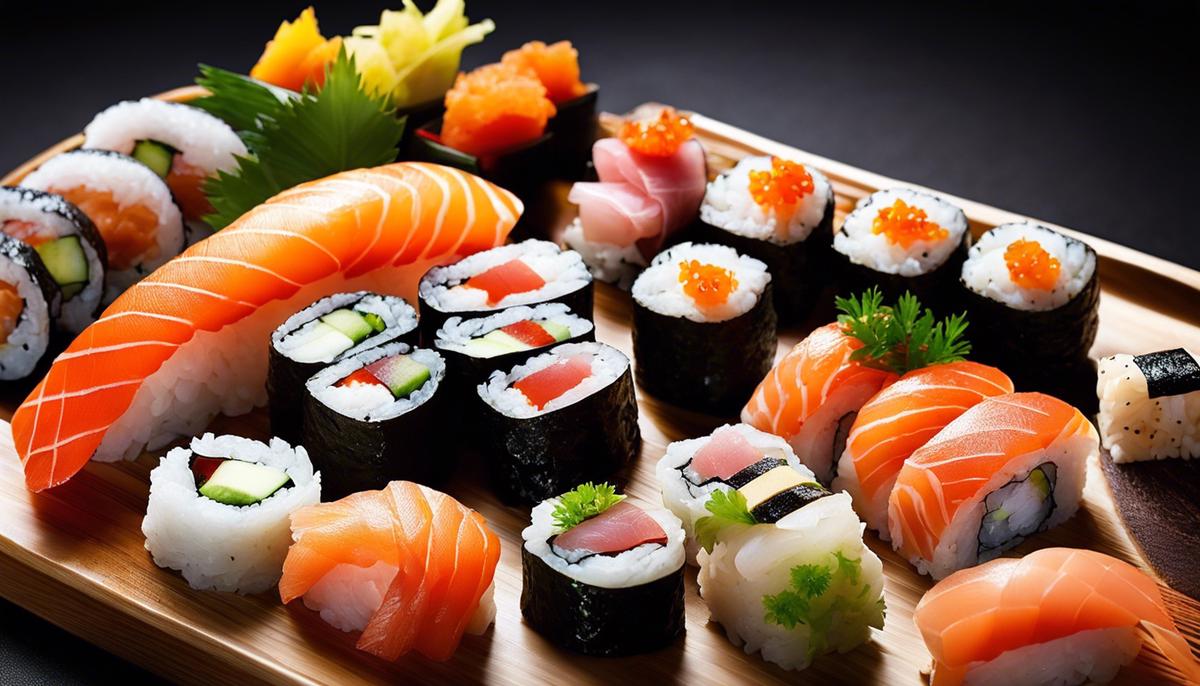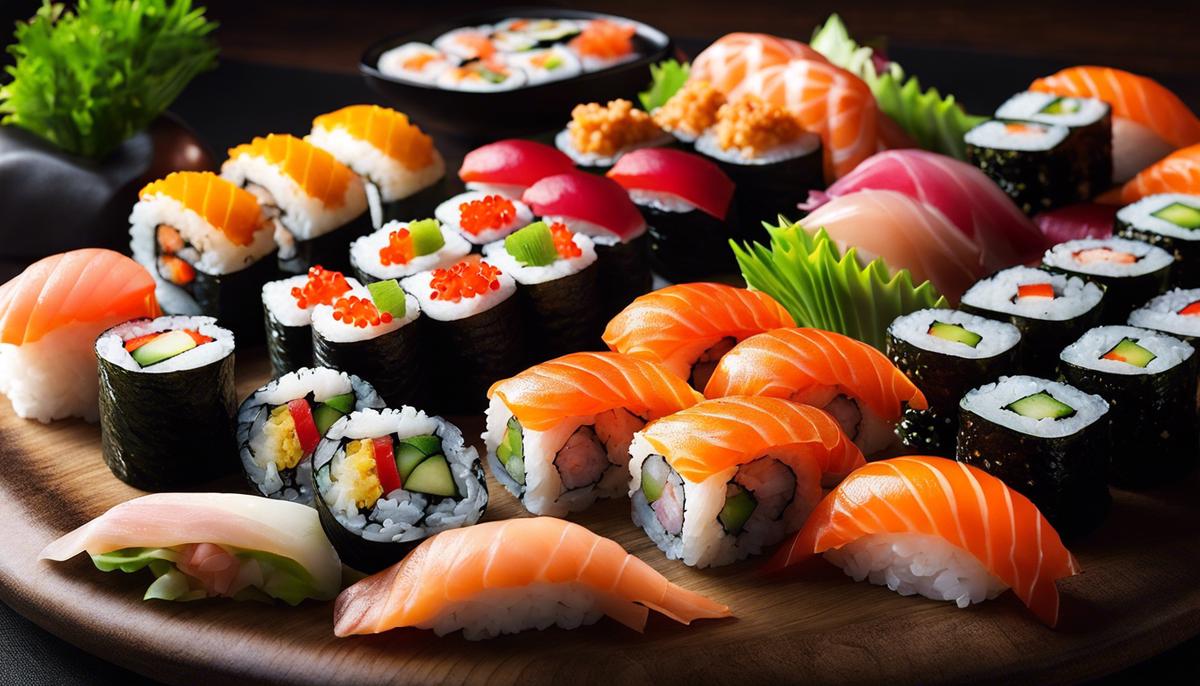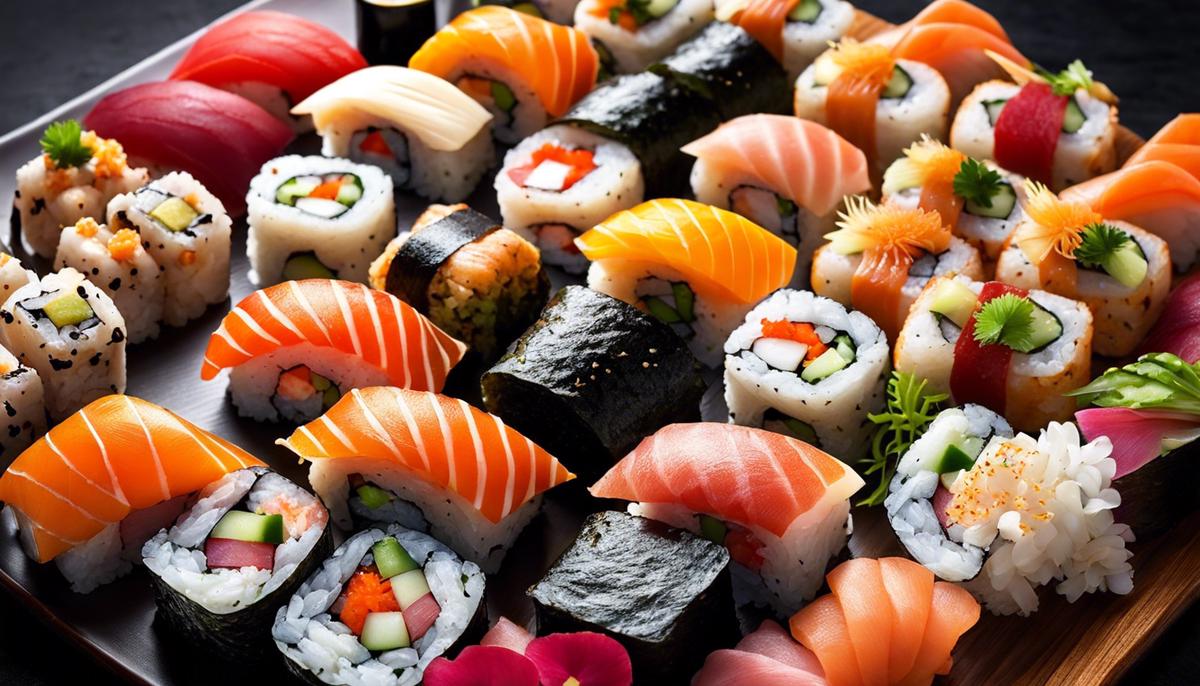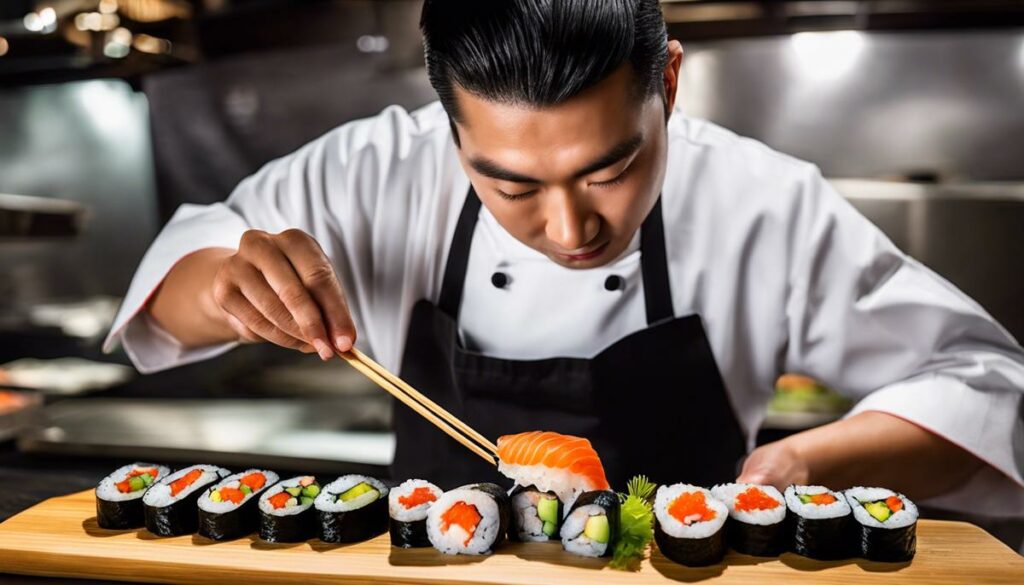Why is sushi more than just a piece of raw fish on rice? This is a question that the Western world is often asked when it comes to Japanese cuisine. In reality, sushi is a complex and delicate art that requires much more than just its main ingredients. It is a deep-rooted tradition in Japanese culture that has developed over generations and in which a lot of time, patience and skills have been invested. In this essay, we will explore the art of sushi preparation, its cultural significance, and the current trends that have made sushi a global phenomenon far beyond its simple definition of raw fish on rice.
The Art of Sushi Preparation
When we talk about the fascinating and complex art of sushi preparation, we must first make it clear – sushi is far more than just raw fish on a lump of rice! It is a craft that requires delicacy and precision, offering deep insights into Japanese culture and tradition.
From the selection of the best ingredients to the presentation, sushi is a holistic creative experience that requires careful attention to detail. As with many things in life, it can be said that it is both science and art.
The sushi masterpiece starts with the ideal sushi rice. A well-prepared sushi rice is the foundation and gatekeeper of the taste. Rice is not just a side dish, it must have the right texture and flavor to harmonize with the fish. It is important that the rice has the right balance of sweetness and acidity to bring out the flavor of the fish and not overpower it.
Then comes the fish. Freshness and quality are the be-all and end-all here. Due to the simple presentation of sushi, any slightest imperfection or lack of quality will significantly elevate the taste. A true sushi master is a master with fish. They know exactly when and how to cut and peel their fish to get the most out of each variety.
It’s not just about taste, it’s also about aesthetics. The presentation is a dramatic part of the sushi experience. Each piece is presented as a work of art in the truest sense of the word. The colors, shapes, and textures complement each other to create a visual representation that is as satisfying as the actual tasting.
The Japanese aesthetic of “wabi-sabi”, which finds beauty in imperfection and transience, permeates the art of sushi preparation. This belief is evident in the unrestricted presentation of sushi; in its natural beauty.
In addition to the aesthetics and taste, sushi also reflects the respect and honor of Japanese culture. From the bowing of the sushi chef upon entering the restaurant to the way the sushi is prepared and presented in order, every detail counts.
After all, the art of making sushi is a journey. To an untrained eye, making sushi may seem simple and straightforward. But in reality, it is a process that requires years of study and practice to achieve mastery. Not to mention the passion and dedication required to practice and perfect this art form, which is already over a thousand years old, day after day.

Cultural Significance of Sushi
The relevance of sushi in modern gastronomy and its role as a cultural phenomenon.
Sushi is no longer just a dish served in Japanese restaurants. This culinary masterpiece has conquered the whole world and has become a beacon of modernity, healthy living and fine taste. Our interest in sushi illustrates our appreciation for craftsmanship, foodiness and stylistic advantages – ultimately a synthesis of food and art.
But behind this visual and gustatory delight lies a deeper meaning that defines the masterpiece sushi not only as food, but also as a social and cultural icon. It is a medium of expression, a representation of skill, and a metaphor for fine art that transcends sensory pleasure.
Sushi is a manifestation of Japanese heritage and traditions. From choosing the right fish to tasting it, every step is an expression of omotenashi, Japanese hospitality based on the principle of anticipation and loving attention to every detail. This concept of courtesy and respect is deeply embedded in every role of sushi and we can feel it with every bite.
No less important is the role of sushi as a social medium. Consuming sushi together is an opportunity for communication and social exchange. It is a reflection of modern food culture and the urban population’s quest for a refined and sophisticated life.
Sushi also adapts seamlessly to the Instagram generation, a society that is constantly nourished by visual pleasure and digital sharing. With its aesthetic appeal and culinary appeal, sushi is the perfect foodie photo material and plays an important role in the digital world, where culinary delights and aesthetics go hand in hand.
In conclusion, sushi is more than just a dish – it’s a part of our identity and embodies our appreciation for art, taste, and cultural heritage. It’s more than a delight for the palate, it’s an experience that appeals to the eyes, senses and soul alike.

Sushi trends and their impact on the lifestyle world
Nowadays, sushi has become a global treat far beyond the culinary borders of Japan. With its rise in popularity, sushi has incidentally taken its place in the modern lifestyle world. The encounter with sushi is more than just a meal – it’s an experience that honors traditional Japanese art and skill.
Sushi carries a rich cultural meaning and symbolism. It represents aspects of Bushido – the “Way of the Warrior” – which values discipline and mastery. It is a testament to reverence for nature and appreciation of its gifts. A sushi casserole is a visible sign of hospitality and an expression of omotenashi – the Japanese art of receiving guests.
When it comes to the craftsmanship and foodiness behind sushi, timing and temperature play a crucial role. Sushi chefs need to find the perfect balance between the components, balancing the warmth of the rice with the coolness of the fish to achieve the optimal harmony of flavor.
Sushi also serves as a social and communal dining experience. It offers the opportunity to linger in a convivial atmosphere while enjoying the finest appetizers and drinking sake. It allows the exchange of stories and experiences, thus strengthening the connections between people.
The adaptability of sushi to the needs of the Instagram generation opens up new dimensions for culinary creativity. Whether with sparkling unicorn rolls or artfully arranged poke bowls, sushi offers ample space for culinary experimentation and picture-perfect depictions that literally get clicks for likes.
With this digital presence, the social function of sushi comes into play. It has created a platform where like-minded people can share their culinary experiences and discover their preferences. It allows people to connect across borders and express their love for food.
The identity created by sushi is also gaining in importance. Just as every wine has its terroir, every piece of sushi has its own story – from the selection of fish to the precise hand gesture of the sushi chef. It’s about more than just the product; it’s about the craftsmanship, aesthetics and cultural recognition that manifest in every bite.
In conclusion, sushi is a holistic experience for the eyes, senses and soul. It is a sensual celebration that includes the enjoyment of flavours, shapes and textures. It’s about appreciating all the elements – from presentation to execution – that combine to create a truly memorable sushi experience.

Ultimately, the beauty and allure of sushi is more profound than the pure, finely selected ingredients that make it what it is. It is a legacy, a reflection of Japanese culture and history, an art form that requires rigorous training and dedication. Sushi is also a trendsetter in the lifestyle world, going beyond its nutritional function and introducing itself to various aspects of everyday life, from fashion to entertainment. It is an ongoing fusion of tradition and innovation that shows very vividly that sushi is much more than just raw fish on rice.


